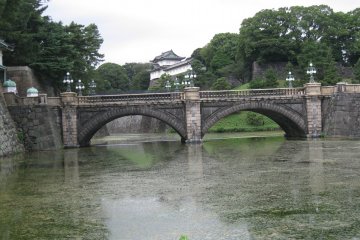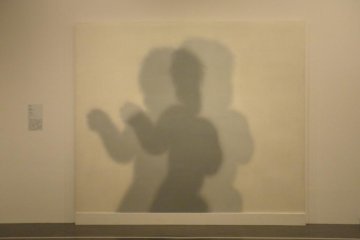I like visiting art museums and galleries. The thing is that I don’t know much about art. I kind of pick up on some of the famous pieces, well-known painters and get caught up once in a while by a piece of which I cannot place its style or period of making. With no art background whatsoever I am there pure for the visuals, so to speak.
Planning a trip to the Museum of Modern Art Tokyo (MOMAT), I had expected a similar experience as when visiting previous other art museums and exhibitions in Tokyo: thronging crowds, queues in front of art pieces, a little bit of the 1900s there, a little bit more contemporary here, leaving a person with a dozen of overwhelming impressions of the visit apart from that experience you had really hoped for: having enjoyed the art.
My visit to the MOMAT was slightly different: the crowds were manageable, one could enjoy minutes watching a painting or sculpture without feeling someone breathe down one’s neck. Don’t expect dozens of art pieces of a similar style or topic crammed in one floor giving you the feeling that if you’ve seen one of them, you’ve seen them all. On the contrary, it seems each piece was carefully selected for exhibition with an acceptable amount of art pieces representing a certain period. The paintings and sculptures are each intriguing and often beautiful (the connoisseurs could discuss lengthily what a ‘beautiful’ painting ought to consist of) but for someone like me, they were each just aesthetically beautiful and lovely to look at in terms of depiction of the figures (some paintings looked as realistic as an I-phone picture!), the choice of colors, forms, materials, topics etcetera.
In addition to an interesting collection, the MOMAT also pre-arranges the art chronologically for you so that you can follow the big red line in the history of modern art in Japan since the Meiji Period. For instance, they let you start up at the 4th floor, where you can see a ‘summary’ of the highlights in the period 1900 – 1940, dominated by silk and paper screens. Descending via the 3rd floor, you are then introduced to Japanese paintings from the period 1940 – 1960, with a special focus on movements such as futurism and surrealism and art that was produced during the war. The 2nd floor introduces foreign works from the 1970s to 2010. A special budget was established to collect foreign works starting the 1970s which now include those of Van Gogh, Rousseau, Matisse and Picasso. Despite the lack of audio equipment in English, each floor has introduction signs in English narrating on the historic developments and circumstances against which the production of the paintings took place. On the ground floor the special exhibitions are showcased.
I ended up strolling the whole afternoon through the MOMAT, taking my time to savor and enjoy the collection. Enjoy the pictures that come with this piece and do hope you will grab the opportunity to visit the museum for yourself.














